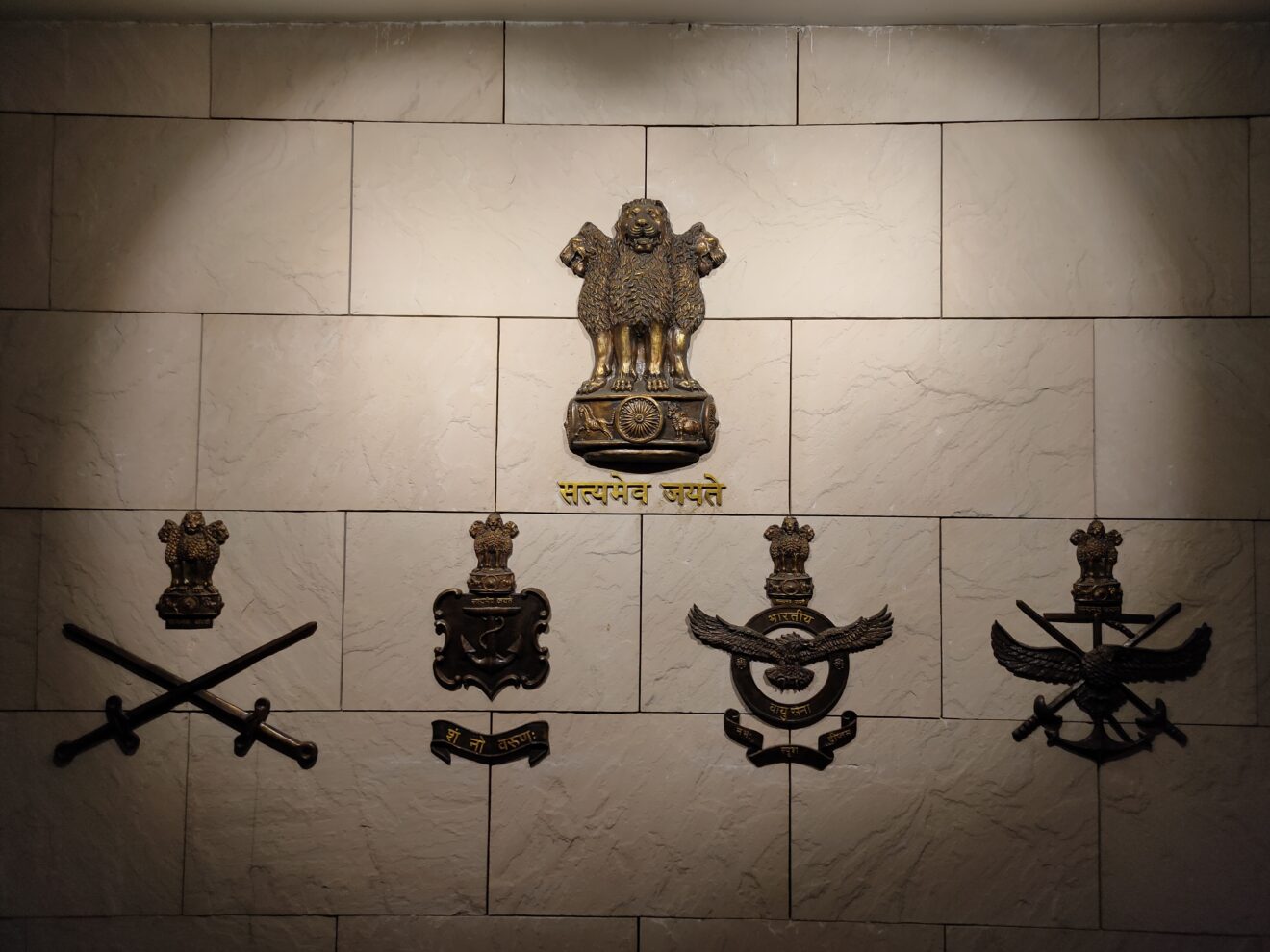India’s Defence Transformation: Domestic Manufacturing Reduces Global Import Dependency from 11% to 4% Over 14 Years
By Defence Journalist Sahil
New Delhi, 23 June 2025
In a remarkable strategic turnaround, India has significantly reduced its reliance on foreign defence imports over the past 14 years, reflecting a determined national push towards indigenisation, self-reliance, and strengthening the domestic defence industrial base. This shift, highlighted in a recent report by Kotak Mutual Fund, underscores India’s evolving role in the global defence landscape — from being the world’s largest arms importer in 2010 to now standing at fourth place in 2024.
From Top Importer to Self-Reliance Journey
Back in 2010, India was grappling with a staggering 11 per cent share of the world’s total defence imports — the highest globally. The country’s defence preparedness was heavily dependent on overseas suppliers for advanced weapons, platforms, and critical technologies. At that time, Pakistan followed with 9 per cent, Australia with 6 per cent, and South Korea with 5 per cent of global defence imports. Other major importers included Saudi Arabia, the United States, Singapore, and China, each with a 4 per cent share, while Algeria and Portugal accounted for 3 per cent each. The remainder — nearly half of global arms imports — was distributed among various other nations.
Fast forward to 2024, and the scenario has dramatically changed.
According to the Kotak report, India has successfully brought down its share of global defence imports to just 4 per cent. This achievement reflects a conscious national effort towards building indigenous capabilities, fostering public-private partnerships, and incentivising the domestic defence industry.
Geopolitics Redefining the Global Arms Market
The global defence import rankings have seen a significant reshuffle, driven by geopolitical conflicts and evolving security requirements.
War-torn Ukraine, due to the ongoing Russia-Ukraine conflict, has emerged as the world’s largest defence importer, accounting for 18 per cent of global imports — a sharp increase reflecting Kyiv’s heightened military needs. Poland has secured the second position with a 5 per cent share, driven by regional security concerns and NATO commitments.
The United States, traditionally seen as a leading defence exporter, has itself climbed to the third spot among importers, sharing a 4 per cent stake with India, Qatar, Saudi Arabia, South Korea, and Australia. Meanwhile, Japan and Pakistan now account for 3 per cent each.
Notably, the ‘Others’ category, representing countries with smaller import shares, has remained unchanged at 47 per cent between 2010 and 2024.
Indigenisation: The Backbone of India’s Defence Policy
The Kotak Mutual Fund report attributes India’s reduced import dependency to the Modi government’s steadfast push for indigenisation under initiatives such as Aatmanirbhar Bharat, Make in India, and Defence Production & Export Promotion Policy (DPEPP).
Over the years, India has invested heavily in building indigenous capabilities, supporting Defence Public Sector Undertakings (DPSUs), encouraging private sector participation, and creating an ecosystem for startups and MSMEs to contribute to defence innovation.
Strategic collaborations, transfer of technology agreements, and policy measures such as import embargoes on select weapon categories have further catalysed this shift. The opening up of defence corridors in Tamil Nadu and Uttar Pradesh has played a key role in fostering regional defence manufacturing hubs.
Rise of Indian Defence Exports
While reducing imports, India has simultaneously strengthened its presence as an emerging defence exporter.
The Kotak report reveals that India’s defence exports have witnessed a Compound Annual Growth Rate (CAGR) of 41 per cent since 2017. Defence exports soared from ₹15 billion in 2017 to ₹236 billion in 2024, signalling not only growing global acceptance of Indian-made defence products but also the sector’s significant contribution to the national economy.
India now exports a range of defence equipment, including artillery systems, armoured vehicles, radars, drones, naval platforms, and ammunition to over 85 countries.
Expert View: A Strategic Leap
Defence experts, including Defence Journalist Sahil, view this development as a strategic milestone for India’s security and sovereignty.
“India’s reduced dependency on imports, combined with robust export growth, reflects not just numbers but a maturing defence ecosystem. The emphasis on indigenous R&D, private sector involvement, and strategic partnerships are laying the foundation for true self-reliance. This is critical given India’s regional security challenges and the need for reliable, indigenous defence solutions,” said Sahil.
Future Outlook
Despite the progress, experts caution that achieving complete self-reliance will require sustained policy support, faster procurement processes, greater investments in research and development, and nurturing of skilled manpower.
However, with this latest data highlighting tangible results, India appears firmly on the path to transforming from a major importer to a global defence manufacturing hub.
भारत की रक्षा क्रांति: स्वदेशी निर्माण ने 14 वर्षों में रक्षा आयात पर निर्भरता 11% से घटाकर 4% की
रक्षा पत्रकार साहिल की विशेष रिपोर्ट
नई दिल्ली, 23 जून 2025
भारत ने बीते 14 वर्षों में अपनी रक्षा नीति में ऐतिहासिक बदलाव करते हुए विदेशी आयात पर निर्भरता को उल्लेखनीय रूप से कम कर दिया है। कोटक म्यूचुअल फंड की ताज़ा रिपोर्ट इस बात का प्रमाण है कि भारत अब न केवल स्वदेशी रक्षा निर्माण की दिशा में आगे बढ़ रहा है, बल्कि वैश्विक रक्षा आयात के क्षेत्र में भी उसकी स्थिति काफी बेहतर हुई है।
2010 में सबसे बड़ा आयातक, 2024 में चौथे स्थान पर
2010 में भारत दुनिया का सबसे बड़ा रक्षा उपकरण आयातक था। उस समय भारत का वैश्विक रक्षा आयात में 11 प्रतिशत हिस्सा था। पाकिस्तान 9 प्रतिशत, ऑस्ट्रेलिया 6 प्रतिशत और दक्षिण कोरिया 5 प्रतिशत के साथ क्रमशः दूसरे, तीसरे और चौथे स्थान पर थे। इसके अलावा सऊदी अरब, अमेरिका, सिंगापुर और चीन प्रत्येक का 4 प्रतिशत हिस्सा था, जबकि अल्जीरिया और पुर्तगाल 3-3 प्रतिशत पर थे। बाकी 47 प्रतिशत अन्य देशों में बंटा हुआ था।
लेकिन अब तस्वीर पूरी तरह बदल चुकी है। कोटक रिपोर्ट के अनुसार, 2024 में भारत की वैश्विक रक्षा आयात में हिस्सेदारी घटकर महज 4 प्रतिशत रह गई है।
यूक्रेन बना सबसे बड़ा आयातक, भारत ने आत्मनिर्भरता की दिशा में बढ़ाया कदम
रूस-यूक्रेन युद्ध के चलते यूक्रेन ने 18 प्रतिशत के साथ सबसे बड़ा रक्षा आयातक बनने की स्थिति प्राप्त कर ली है। पोलैंड 5 प्रतिशत के साथ दूसरे और अमेरिका, भारत, क़तर, सऊदी अरब, दक्षिण कोरिया व ऑस्ट्रेलिया प्रत्येक 4 प्रतिशत के साथ तीसरे स्थान पर हैं। जापान और पाकिस्तान 3 प्रतिशत के साथ सूची में शामिल हैं।
‘अन्य देशों’ की श्रेणी, जो छोटे हिस्से वाले देश शामिल करती है, 2010 और 2024 दोनों में 47 प्रतिशत पर स्थिर रही।
‘मेक इन इंडिया’ और ‘आत्मनिर्भर भारत’ की बड़ी भूमिका
भारत में रक्षा क्षेत्र में आत्मनिर्भरता बढ़ाने के लिए केंद्र सरकार ने बीते एक दशक में कई नीतिगत फैसले लिए। मेक इन इंडिया, आत्मनिर्भर भारत, और डिफेंस प्रोडक्शन एंड एक्सपोर्ट प्रमोशन पॉलिसी (DPEPP) जैसे अभियानों ने स्वदेशी रक्षा उद्योग को मजबूती प्रदान की।
रक्षा सार्वजनिक क्षेत्र की कंपनियों (DPSUs) के साथ-साथ निजी क्षेत्र और स्टार्टअप्स को भी रक्षा निर्माण में अहम भूमिका निभाने का मौका मिला। उत्तर प्रदेश और तमिलनाडु में स्थापित रक्षा गलियारों ने इस दिशा में ठोस आधार तैयार किया।
सरकार द्वारा कुछ हथियार श्रेणियों पर आयात प्रतिबंध लगाने, प्रौद्योगिकी हस्तांतरण को प्रोत्साहन देने और रक्षा अनुसंधान एवं विकास पर ज़ोर देने से देश में विकसित रक्षा उपकरणों की क्षमता में उल्लेखनीय वृद्धि हुई।
तेजी से बढ़े भारत के रक्षा निर्यात
रिपोर्ट बताती है कि भारत के रक्षा निर्यात में भी ज़बरदस्त बढ़ोतरी हुई है। 2017 में जहां यह आंकड़ा ₹1,500 करोड़ था, वहीं 2024 में यह ₹23,600 करोड़ तक पहुंच गया। भारत अब 85 से अधिक देशों को विभिन्न रक्षा उपकरण, हथियार प्रणाली, ड्रोन, रडार, गोला-बारूद और नौसेना प्लेटफॉर्म निर्यात कर रहा है।
विशेषज्ञों की राय: रणनीतिक मजबूती का संकेत
रक्षा विशेषज्ञों का मानना है कि यह परिवर्तन भारत के लिए रणनीतिक दृष्टि से बेहद अहम है।
रक्षा पत्रकार साहिल के अनुसार, “आयात पर निर्भरता में कमी और निर्यात में तेज़ी से बढ़ोतरी यह दर्शाता है कि भारत अब रक्षा क्षेत्र में आत्मनिर्भरता की दिशा में मज़बूती से आगे बढ़ रहा है। स्वदेशी अनुसंधान एवं विकास, निजी उद्योग की भागीदारी और रणनीतिक साझेदारियां भारत को तकनीकी रूप से सक्षम बना रही हैं। यह न केवल राष्ट्रीय सुरक्षा के लिए जरूरी है, बल्कि अर्थव्यवस्था के लिए भी बड़ा सकारात्मक संकेत है।”
सतत नीति और निवेश की आवश्यकता
हालांकि विशेषज्ञ मानते हैं कि अभी पूरी आत्मनिर्भरता हासिल करने के लिए लंबा रास्ता तय करना बाकी है। अनुसंधान एवं विकास में और अधिक निवेश, तेज़ फैसले, निजी उद्योग को समर्थन और कुशल मानव संसाधन का विकास आवश्यक है।
फिर भी, ताज़ा रिपोर्ट भारत की रक्षा क्षमता में आई इस क्रांतिकारी प्रगति को रेखांकित करती है और यह संकेत देती है कि भारत अब न केवल रक्षा उपकरण आयात करने वाला देश है, बल्कि भविष्य में वह वैश्विक रक्षा विनिर्माण केंद्र बन सकता है।









Add Comment